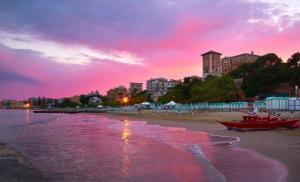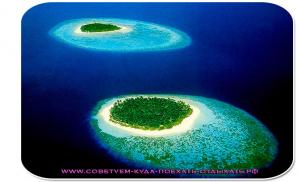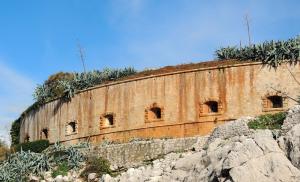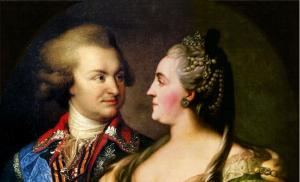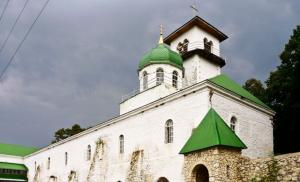Floor paving chrysotriclinium of the great palace in Constantinople. Sights of Turkey - Grand Palace (Constantinople) Grand Palace of Constantinople
With. thirty¦ When Constantinople was founded in 330, Christian art in Rome and the East already had a long history. In all major cities there were their own art schools and local traditions. Constantinople alone was deprived of these traditions. Created by the will of Constantine, it was forced from the very beginning to borrow from outside. There is reason to think that the main source of Constantinople painting of the 4th–5th centuries was the art of Rome, Alexandria, Antioch, Ephesus and a number of other Hellenistic cities of the East. Here, by the 5th century, the basic principles of that “Byzantinism” had been developed, which a number of scientists recklessly associate exclusively with Constantinople. In fact, Constantinople found in ready-made form much of what later formed the basis of its own aesthetics. He inherited spiritualistic art with a pronounced dualism, carefully developed iconography that embraced the Old and New Testaments, mature mosaic, fresco and encaustic techniques, which made it possible to record a phenomenon not only in its linear, static aspect, but also in a purely pictorial, impressionistic plane , a rich fund of ornamental motifs, a refined palette and a developed system of monumental decoration. But the role of Constantinople was never reduced to slavish copying of other people's models. Very soon he moved on to critical selection, discarding everything that did not meet his needs. On this path, he gradually moved away from Roman traditions, which were dangerous due to their undisguised sensualism, reflecting the practical spirit of the Western Church. On this same path, he moved away from Syrian traditions, whose rough, expressive realism could not appeal to the refined tastes of metropolitan society. And on this path he joined the classicist traditions of Alexandrian art, which preserved Greek Hellenism in its purest form. Thus, Constantinople became his direct heir, logically continuing the line of his urban development. Overcoming popular influences, he carefully preserved from the past all those forms that were cultivated by the upper classes of late antique society. The spiritualized forms of late antique art were especially valuable to him. From all this complex amalgam of various intersecting currents, Constantinople created its own style, which first appears to us as something holistic in the 6th century, in the era of Justinian.
We do not know what was done in Constantinople in the field of antique painting in the 4th–5th centuries. Here the later mosaic floors in the northern and southern porticos of the peristyle of the Great Imperial Palace 60 come to our aid. Figures of people and animals arranged in the form of freely interpreted friezes are presented on a white background. (Table 6–10). Various episodes are separated from each other by trees, buildings, rocks, personifications (for example, the figure of a river nymph), which involuntarily brings to mind the compositional principles underlying the miniatures of the Vatican Scroll of Joshua. The entire floor mosaic is perceived as a huge carpet filled with decorative motifs. It is framed by a wide border of a succulent, purely antique type of acanthus, between the shoots of which masks, figures of various animals, fruits and flowers can be seen. When comparing the mosaics of the Grand Palace with the mosaics of Italy, France, Africa and Syria, one is struck by the variety and liveliness of the scenes depicted on it: there are various animal fights (lion with elephant, deer with snake, griffin with lizard, leopards with gazelle, wolf with ram, lioness with a wild donkey, an eagle with a snake), hunting hares, wild boars, lions and tigers, a mountain goat peacefully nibbling grass, milking goats, a herd of horses, children herding geese, a young mother sitting with a child on her lap, a fisherman with a fishing rod, Pan with Bacchus on shoulder, moschophorus, woman carrying a jug, circus games (young men roll wheels with sticks, skillfully going around the mark). Most of these images are traditional in nature and are found in the mosaics of the villa in Piazza Armerina in Sicily, as well as in similar mosaics in Antioch, Homs and Apamea. In 1953–1954, new fragments of the same mosaic floor were discovered, which depict two charming genre scenes: boys riding a camel (Table 11) and a mule, throwing its rider and bundles of firewood to the ground. One of the fragments also revealed a walled building with streams of water flowing from the gate. The mosaic of the Grand Palace is made of limestone of various types, marble and smalt (blue, green and yellow). The general range of colors, which is dominated by shades of red, blue, green, yellow, brown and gray, as well as white and black, is dim. The tradition of ancient colorism with its light and transparent halftones is still strongly felt in it.
60 K. Bittel. Archäologische Funde aus der Türkei 1934–1938. - ArchAnz, 54 1939, 182–183 (“Die Grabungen im Gebiet der Kaiserpaläste”); G. Brett. The Mosaic of the Great Palace in Constantinople. - JWarb, V 1942, 34–43; G. Brett, G. Martigny, R. Stevenson. The Great Palace of the Byzantine Emperors. Being a First Report on the Excavations carried out in Istanbul on behalf of the Walker Trust (The University of St. Andrews). 1935–1938. Oxford 1947, 64–97, pl. 28–56; C. Mango. Autour du Grand Palais de Constantinople. - CahArch, V 1951, 179–186; D. Talbot Rice. Excavations in the Great Palace of the Byzantine Emperors, - Πεπραγμένα τοῦ IX διεθνοῦς βυζαντινολογιϰοῦ συνεδρίου. I. Ἀθῆναι 1955, 468–473; Grabar. La peinture byzantine, 75–76; D. Talbot Rice. Mosaics of the Great Palace of the Byzantine Emperors: Last Finds. - ILN, 12 March 1955; Id. Les mosaïques du Grand Palais des empereurs byzantins à Constantinople. - RArts, V 1955, 159–166; D. Talbot Rice. The Great Palace of the Byzantine Emperors. Second Report. Edinburgh 1958, 123–160, pl. 42–50 (rec. K. Mango and I. Lavin: ArtB, XLII 1960 1, 67–73); Talbot Rice. Arte di Bisanzio, 55–56, tav. 38–41; Beckwith. Art of Constantinople, 29–30; P. J. Nordhagen. The Mosaics of the Great Palace of the Byzantine Emperors. - BZ, 56 1963 1, 53–68; D. Talbot Rice. On the Date of the Mosaic Floor of the Great Palace of the Byzantine Emperors at Constantinople. - Χαριστήριον εἰς Ἀ. K. Ὀρλάνδου, I. Ἀθῆναι 1965, 1–5. To date, not a single decisive argument has been given in favor of one or another dating of the floor mosaics of the Grand Palace. If we proceed from the logic of artistic development, then the most likely time for the execution of mosaics should be considered the end of the 5th - beginning of the 6th century. But when applied to Byzantine painting, we always have to take into account the possibility of very late outbreaks of Hellenism, which makes it extremely difficult to resolve the issue that interests us. This is why the dating of the Grand Palace mosaics remains controversial and requires further clarification.
The discovery of the mosaic floor in the peristyle of the Great Palace is of great significance for the history of early Byzantine painting. It indisputably testifies to two things: the presence of its own school in Constantinople and the vitality of the traditions of late antique impressionism on Constantinople soil. Although some of the graphic motifs of this mosaic floor reveal a close relationship with the mosaic floors of Antioch, North Africa and Italy, the quality of its execution is nevertheless incomparable. It amazes not only with the variety of motifs, freedom in conveying the most complex turns and movements of figures and the liveliness of facial expressions, but also with the finest pictorial modeling using small cubes placed with impeccable precision. Although the masters who performed the mosaics were With. thirty
With. 31¦ simple artisans, but they mastered their art so subtly that the figures they depicted seem to have been painted with bold strokes by real artists. For these masters, Hellenism was a living tradition, much more effective than for the rapidly barbarizing West. Apparently, Emperor Constantine, having founded the new capital, brought here the most qualified craftsmen from Rome and major Hellenistic centers, who laid the foundations for the local school. And since Constantinople was eastern, and not western city, insofar as he naturally adopted first of all Hellenism of the Eastern type. This, in particular, is indicated by the abundance in the mosaic of purely eastern animals (elephants, camels, lions, tigers, monkeys), which were exotic for the West.
In the absence of solid starting points, it is very difficult to date floor mosaics. They always contain so many craft stamps and traditional motifs, borrowed from widespread collections of samples, that the dating of the same monument often differs by several centuries. Thus, K. Bittel dated the mosaics of the Great Palace to the 4th century, J. Brett - to the second decade of the 5th century, D. Talbot Rice - around 530, K. Mango and I. Lavin - between 565 and 582, P. Nordhagen - to the era of Justinian II (685–695), J. Baxter - 8th century. The most likely time for the emergence of sex seems to be the second half of the 6th century. This is indicated by the general compositional structure of the mosaic, in which the principle of a separate figured plot dominates. The images are presented as separate parts of the frieze, due to which they are perceived as self-contained images scattered across a white background like decorative ornaments. The lack of spatial relationship introduces into the mosaic that element of abstraction that is typical of monuments of both painting and sculpture starting from the second half of the 5th century.
The floor mosaic of the Grand Palace is a chance surviving fragment of the secular art that flourished at the court of the Byzantine emperors. From it one can only get a vague idea of the richness and brilliance of this antique art. Unfortunately, not a single work has yet been discovered from church painting of the 5th century on the soil of Constantinople. The same two monuments that will now be discussed and which are associated with the territory of Greece can hardly be used to characterize Constantinople painting, since they gravitate in their style to a different circle. With. 31
¦
By years It was founded by Constantine the Great between the Hippodrome and Hagia Sophia, rebuilt by Justinian and expanded by Theophilus. The emperor's children born in the Porphyry Hall of the palace were called porphyritic.
Encyclopedic YouTube
-
1 / 5
Justinian began the construction of the palace complex shortly after the Nika uprising, during which a significant part of the buildings of the old imperial chambers of Constantine was damaged in a fire. The central part of the sacred chambers was a large square - the Augusteon, stretching from the Church of St. Sophia to the palace. The square was surrounded on four sides by buildings - the Church of St. Sofia in the north, the Baths of Zeuxippus and the Hippodrome in the southwest, the Senate and the Magnavra Palace in the east, and the imperial residence in the south.
After the fire, the Augusteon was expanded and decorated with white porticoes supported by two rows of columns, the ground being lined with marble. In the square not far from the Golden Column, from which the roads of the empire diverged, a bronze column was erected, topped with an equestrian statue of Justinian. Procopius writes that the emperor was represented with his face turned to the east, with an orb in his left palm and his right hand extended “to command the barbarians.” The emperor was dressed in armor, in which Achilles was usually depicted.
A portico with six white marble columns and decorated with statues was built in front of the Senate building. In the Baths of Zeuxippus, where Constantine collected a collection of ancient statues, Justinian ordered the restoration of multi-colored marble ornaments that had been damaged in the fire. The imperial residence was rebuilt with a pomp that, according to Procopius, cannot be expressed in words. On the southwestern side, under the porticoes, there were iron doors that led to the vestibule, called the Halka. Entering the doors, visitors walked through a semicircular courtyard into a large hall with a dome, which Justinian rebuilt a second time in 558. The floor was made of colored marble bordering a large circular slab of porphyry. The wall panels were also made of colored marble. Along the top were large mosaic paintings depicting Justinian and Theodora in festive clothes, surrounded by senators, scenes of the Vandal and Italian wars, and the triumph of Belisarius presenting the defeated kings to the emperor.
A double-leaf bronze door led from the Halki rotunda to guard rooms called porticoes scholars, protectors and candidates. These were vast halls that served as quarters for the palace guards, and in addition they included state rooms, one of which contained a large silver cross under the dome. Finally, through a wide alley bordered by columns and cutting through the quarter of the guards, one entered the palace itself, where first of all one entered the great Consistorion. It was a throne room, into which ivory doors draped with silk curtains led on three sides. The walls were decorated with precious metals, the floor was covered with carpets. At the back of the hall, on a three-step elevation between two statues of Victoria with outstretched wings, there was a throne covered with gold and precious stones. Above the throne was a golden dome supported by four columns. Behind the throne, three bronze doors opened onto staircases that led to the inner chambers.
Receptions in the Consistorion were held on major holidays, during the appointment of senior dignitaries and the meeting of foreign ambassadors. Next to the Consistorium was the large Triclinium or Triclinium of Nineteen Lodges. It was a large, luxuriously decorated hall in which feasts were held in honor of foreign ambassadors or high dignitaries, and some ceremonies were also held in the Triclinium, such as the coronation of the empress and farewell to the late emperor. Nearby was the Church of the Savior, which served as a palace church during the time of Justinian. The entire described complex was one-story and was called Chalkei, all the buildings of which faced the Augusteon. Behind Chalkea's apartments stood the great palace of Daphne. The Chalkei complex was connected to the palace by many alleys, courtyards and galleries.
The entrance to the palace was located opposite the south-eastern gate of the hippodrome. The palace was two stories high and had two wings that surrounded a large courtyard, part of which was occupied by the emperor's personal arena. The first floor of the buildings was occupied by court services. On the second floor were the emperor's personal chambers, including the most luxurious halls of the chambers. These were three halls - the “triclinium Augusteos”, the “octagonal living room” and the “coyton of Daphne”. The halls were complemented by a wide terrace with a view of the sea. The terrace was part of the Daphne gallery, which contained a statue of the nymph that Constantine brought from Rome. On the other side there was a gallery connecting the Church of St. Stephen, Daphne with the emperor’s box at the Kathismoi hippodrome, which was a palace, where behind the box there were rooms for receptions and rest. In this part of the Chambers, as in Chalkea, there were only reception rooms and office premises. Two palaces located between Daphne and the sea were used for housing - “Chrysotriclinium” and “Trikon”. No description of their decoration has been preserved.
The complex of sacred chambers was complemented by the secluded "triclinium of Magnavar", restored by Justinian with great splendor. Galleries were added to the palace, connecting it with St. Sophia. Thus, the emperor could move from the hippodrome to the church without leaving his home. To top it all off, Justinian included his old house, where he lived before his accession, into the expanded complex of palace buildings.
Mosaics, marble coverings and silks, as well as a variety of luxury items for the interiors, were used to decorate the palace. In addition, work on ivory, gold and silver was carried out in the palace workshops, and manuscripts were copied and decorated. The remaining rooms of the palace were occupied by treasuries, armories, gardens, ball courts and private chambers of the imperial family. Personal chambers had access directly to the sea - various kinds of stairs, colonnades, covered passages and terraces.
Main entrance to Grand Palace in Constantinople passed through the so-called. The Copper House, which had monumental bronze doors and wonderful ceiling inlays in bronze and mosaics. The walls were lined with white marble with blue veins, with greenish marble and red sandstone inserted in places. Right at the entrance there were two bronze figures of horses - it was believed that they had magical properties and protected the imperial gates from the noise and disturbance that real horses could cause. In the center of the floor in the Copper House there was the so-called. The copper navel, that is, the porphyry circle on which the emperor solemnly committed debt receipts to fire during the days of amnesties.



Behind the impressive entrance to the palace were several large palaces, which were constantly rebuilt, expanded and decorated. It is known that there were palaces Bucoleon, Schole and Daphne. In Daphne's palace there was an imperial box overlooking the hippodrome. The large halls of the palaces resembled a basilica in plan. The palaces had a strong church atmosphere, and many holy relics were kept in them. The banner of Constantine was kept in the Hall of Councils (Consistory). The Chrysotriclinium Hall, whose doors were made of pure silver, served as a storage place for the imperial regalia. In the center of this room stood a table, also cast from pure silver. The most famous hall was in the palace of Magnaura, where there was a huge throne made for Emperor Theophilus in the 9th century. In this hall the emperor performed his most magnificent and theatrical court rituals. At first he appeared before the visitors sitting on a throne in a luxurious outfit, but when, after the first amazement, the guests raised their heads, they saw that the throne had risen into the air, and the emperor was sitting on it in a different robe. On the sides of the throne, golden mechanical lions came to life, roaring and shaking their tails. In the center of the hall stood a golden tree with mechanical birds on its branches. Birds could flap their wings and sing. In addition, there was still music in the hall, since there were two organs in it - one silver, the other gold.
Our volunteers will collect information from all local sites, translate it into Russian and publish it. Make Ermak Travel your personal window to the world.
Great Palace of the Byzantine Emperors
Description of the Great Palace of Byzantium their Emperors
/palace.png)
In Byzantine times, on what is now Sultanahmet stood the Great Palace of the Byzantine Emperors, also known as the Sacred Palace (Greek: Ἱερὸν Παλάτιον, Hieron Palation, Latin: Sacrum Palatium), which in its heyday had no equal in Europe. He could dazzle any medieval visitor with his wealth. This huge complex buildings, including royal apartments, state rooms, churches, courtyards and gardens. It extended over a sloping, terraced area from the Hippodrome to the imperial harbor on the shores of the Sea of Marmara. The Great Palace was built in stages, starting with Constantine the Great in the 4th century. It was enlarged by Justinian after the fire caused by the Nike revolt in 532. Later emperors, especially Basil I, increased it further. After several hundred years of use, it was finally abandoned in the second half of the 13th century in favor of the Blacherna Palace or the Blacherna Palace. The Turkish sultans demolished most of the Palace of the Byzantine Emperors to build the Blue Mosque. But some fragments of the palace have survived. Of course, the Mosaic Museum gives some idea of the splendor of the interior that reigned in the heart of the Byzantine Empire.
Atlantis Dyatlov Pass Waverly Hills Sanatorium Rome London Pompeii Herculaneum Nessebar Hilt Adrianov Val Antonine Wall Skara Brae Parthenon Mycenae Olympia Karnak The Pyramid of Cheops Troy Tower of Babel Machu Picchu Coliseum Chichen Itza Teotihuacan the great Wall of China Side Stonehenge Jerusalem Petra Story Great Palace Byzantine their Emperors
When Constantine I moved the Roman capital to Constantinople in 330, he planned a palace for himself and his heirs. The Byzantine Palace of their Emperors was located between the Hippodrome and the Hagia Sophia. The palace complex was rebuilt and expanded several times during its history. Much of the complex was destroyed during the Nike riots in 532. It was lavishly restored by Emperor Justinian I.
The central part of the Great Palace of the Byzantine Palaces was occupied by a large square - the Augusteon. It extended from the Hagia Sophia to the palace. Augusteon Square was surrounded by the Cathedral of St. Sofia in the north, the Baths of Zeuxippus and the Hippodrome in the southwest, the Senate and Magnavra Palace in the east, and the imperial residence in the south. After the fire, the Augusteon was expanded and decorated with white porticoes supported by two rows of columns. The square itself was paved with marble. On Augusteon, not far from the Golden Column, from which the roads of the empire diverged, a bronze column was erected, topped with an equestrian statue of Emperor Justinian. The Byzantine historian Procopius writes that the statue of the emperor faces the east, with an orb in the left palm and an outstretched right hand, as a symbol of power over the barbarians. This is a rather strange direction, since Emperor Justinian was especially distinguished by his campaigns against the barbarians in the West. For a fairly short period, he managed to return many territories of the Western Roman Empire to the Byzantine Empire. The emperor was dressed in armor like the Greek hero of the Trojan War, Achilles.
Further expansions and changes were ordered by the emperors Justinian II and Basil I. However, by the reign of Constantine VII, its dilapidated condition forced the Byzantine emperors to spend huge sums on renovations. However, from the early 11th century, the Byzantine emperors favored the Blachernae Palace as the imperial residence, although they continued to use the Great Palace of the Byzantine Emperors as the main administrative and ceremonial center of the city. It declined significantly over the next century as parts of the complex were destroyed or filled with rubble. During the siege of Constantinople during the Fourth Crusade The Great Palace of Byzantium and their Emperors was plundered by the soldiers of Boniface Montferrat. Although subsequent Latin emperors continued to use the palace complex, they lacked the money to maintain it. The last Latin emperor, Baldwin II, went so far as to dismantle; roofs of the palace and sold them.
Consequently, when the city was recaptured by the forces of the Byzantine Emperor Michael VIII Palaiologos in 1261, the Grand Palace fell into disrepair. The Palaiologan Emperors largely abandoned this, ruling the Byzantine Empire from the Blachernae Palace and using the vaults of the former Great Palace as a prison. When Mehmed II entered the city in 1453, he found the palace destroyed and abandoned. As he wandered through its empty halls and pavilions, he is said to have whispered a quote from the Persian poet Ferdowzi.
The Great Imperial Palace (Sacred Palace) is a palace complex located in the 1st region of Constantinople, southwest of the hippodrome and south of the Church of St. Sophia.
It began to be built in 324 by the Emperor Great (306-337) and was opened on the day of the official founding of the Second Rome, May 11, 330.
Almost until the beginning of the 13th century, i.e. for almost nine hundred years, it was rebuilt and expanded. The maximum expansion occurred under Basil I the Macedonian (867-886), and the largest later erected structure was the New Upper Palace (10th century), united with Vukoleon by a single system of fortifications and becoming a citadel within a citadel.
Initially, it had the shape of an irregular heptagon (the shape of which was later, during its expansion, roughly preserved) bordered on the north by the Augusteon and the baths of Zeuxippus, on the west by the hippodrome, on the south and southeast by the slopes of the hills descending to the Propontid area of the sea walls, and in the east - city blocks. The entire territory was surrounded by walls with numerous towers, including travel towers. The Great Palace was connected to the hippodrome, the kathisma of which, in fact, was its integral part, and to the Church of St. Sophia.
Later, the city sea walls began to play the role of its southern and southwestern walls.
The complex was an autonomous area of the city, intended for the residence of the emperor with his family, the palace garrison and service personnel.
The interior space was occupied by palaces, including: Halka (330), Sigma (between 823 and 843), Daphne (330), Trullo (IV century), Triconkh (between 829-841) , Bukoleon (between 419 and 450), New Upper Palace (before 967), Lawsiak (before 812), Skyla (330), Kamil, Mesopat and Musik (all three between 829-841 .), Eros (330), Justinian (694), Kenurgius, Pentakuvikl and Orel (all between 866 and 885); churches - St. Stephen (330), St. Theodore Tyrone (5th century), St. Agathia (IV century), St. Agathonika, which became part of the palace complex under Vasily I (330), Theotokos (Pharos) (IV century), St. Apostles (IV century), Archangel Michael (between 829 and 841), New Church (between 866 and 885), St. Elijah the Prophet (before 865), St. Peter; chapels, incl. St. Paul (between 866-885), St. Anne, palace (between 867 and 911), St. Clement (between 866 and 885) and others; gardens, the largest of which is Mesokipios (between 866 and 885), open artificial ponds and cisterns; outbuildings, service buildings and barracks. There were special courtyards for communication with representatives of hippodrome parties. Very often a new building or several new halls were added to an earlier palace. The names of the palace buildings could come from the names of the halls located in them (Daphne); or the name of the main hall in the palaces was named after the buildings themselves (Sigma).
In addition, the complex had: prisons - Khalka, Elephant, Numer and Vukoleon; Tsikanistr - hippodrome for polo - horse-drawn ball game; several baths; your own workshops; arsenal (Eros); pier (rock) Vukoleon and library.
On the territory of the complex was located Pharos - the city lighthouse (between 566 and 577), under Emperor Michael III (840-867) which began to serve as the final station of the light telegraph. For convenience, buildings and structures were connected covered galleries, or were surrounded by porticos. There were running water and sewerage systems with water for flushing sewage.
Palace buildings, churches, chapels, galleries and porticos, as well as the arches of a number of passage gates, were decorated with amazing mosaics, paintings, marble and colored stone. Stained glass, bronze, silver and gold were widely used in the interiors. The roofs of many buildings were covered with lead and gilded bronze. There were numerous intricate fountains in the gardens and courtyards. Exotic plant species were planted and exotic bird species were bred. In addition to open reservoirs, there were small ponds made of mercury in which replicas of waterfowl swam. The Grand Palace complex was filled with statues brought and brought from all over the empire.
The capture of Constantinople by the Crusaders in 1204 marked the beginning of the end of the Great Palace: the palace churches and chapels were plundered; metal statues, decorative elements and roofing were melted down; floor slabs, cladding and columns were broken out and sold to the West.
In 1261, after the liberation of the city from the occupiers, the complex, like the whole of Constantinople, presented a depressing sight. In practice, except for a few restored churches and buildings, the Grand Palace was not restored until the capture of the city by the Turks.
After the fall of the empire in 1453, the surviving churches on its territory were converted into mosques. The Turks also used some sections of its walls during the construction of Topkapi, the residence of the Sultan.
Currently, the territory of the Grand Imperial Palace complex contains several former churches in varying degrees of preservation, several ruins and a Museum of mosaics discovered during a few excavations, as well as isolated populations of exotic birds.
